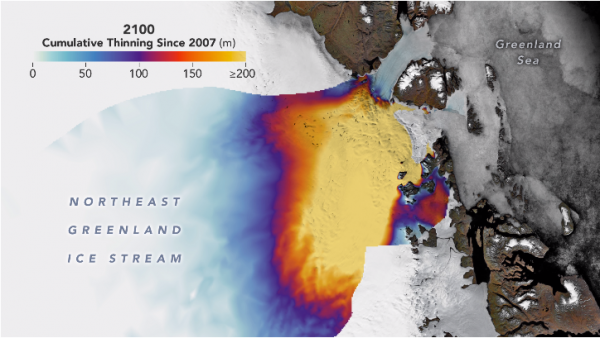Greenland is home to the planet’s largest ice sheet outside of Antarctica. Observations collected from the ground, air, and space, have revealed rapid thinning in the northeast part of this ice sheet that could contribute more to sea level rise than previously thought.
“Rivers” of relatively fast-moving ice, known as ice streams, generally flow from Greenland’s interior toward its coasts. The Northeast Greenland Ice Stream is the island’s largest, draining ice from a basin that spans about 12 percent of the ice sheet. Much of that land-based ice eventually flows through two main outlet glaciers, where it discharges icebergs and melts into the ocean.
Shfaqat Abbas Khan, a scientist at the Technical University of Denmark, and colleagues recently found that the Northeast Greenland Ice Stream is speeding up and thinning, not only at its margins but also far inland. A team of ice sheet modelers at Dartmouth College then used these data to revise their projections of the ice stream’s contribution to sea level rise, which they say is expected to be six times larger than models previously indicated by the end of the century. The research was published in the journal Nature.
Read more at: NASA Earth Observatory
Photo Credit: Joshua Stevens


